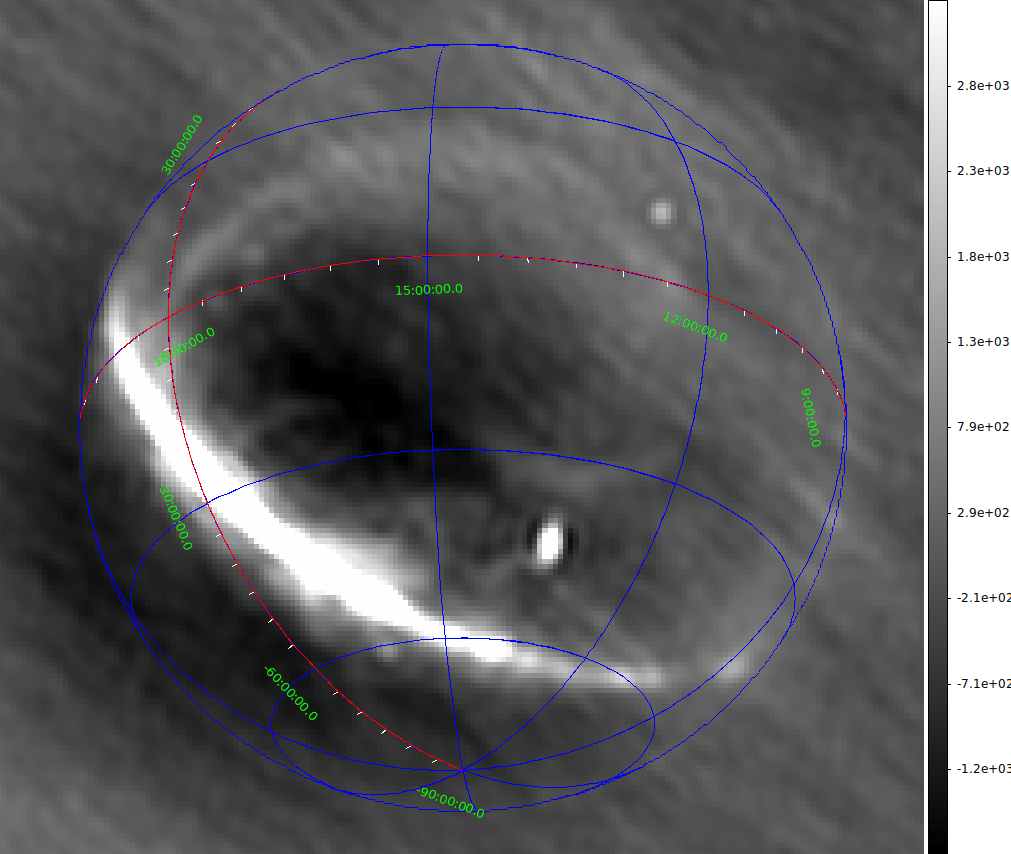Project area/S
- Accretion physics and slow transients
- Fast transients and pulsars
- Data Intensive Astronomy
Project Details
The Low-Frequency Square Kilometre Array (SKA-Low) is the next generation radio telescope, which will be built at the Murchison Radio-astronomy Observatory (MRO) in the next decade. The telescope will consist of 512 stations composed of 256 dual-polarised antennas each and will observe at frequencies between 50 and 350 MHz.
In 2019, two prototype stations of the SKA-Low were deployed at the MRO and have been regularly collecting data for engineering and science purposes. Multiple long observations (longer than 24 hours) have already been conducted with both stations at several frequencies resulting in thousands of all-sky images. The collected data show that there is a variety of objects which can be found in these images ranging from radio-frequency interference (RFI) emitted or reflected by aircraft or satellites to genuine astrophysical transients (for example extreme scintillation events of pulsar emission). Recent low-frequency detections of fast radio-bursts (FRBs) down to 328 MHz by other radio-telescopes show that very bright low-frequency FRBs could also be detected by such an all-sky imaging system.
The goal of the project is to design, implement and execute an algorithm to automatically classify hundreds of transient candidates and generate a short list of potentially interesting astrophysical events, which will be further inspected and verified against external sources and transient alerts from other instruments.
Student Attributes
Academic Background
Programming in python is required. It may be sufficient if the student is proficient in programming in any other language and can quickly learn python. Astronomy/astrophysics background.
Computing Skills
Python, bash scripting, Linux environment Familiarity with machine learning techniques and packages would be a great advantage, but is not required.
Training Requirement
I will recommend the student to participate in the standard PAWSEY training usually provided to summer students as it always has very relevant set of topics covered.
Project Timeline
- Week 1 Inductions and project introduction
- Week 2 Initial Presentation
- Week 3 Getting familiar with the data to be used in the project
- Week 4 Design a transient classification algorithm
- Week 5 Implement transient classification algorithm
- Week 6 Execute algorithm on one or more datasets collected with the SKA-Low precursor stations and start short listing potentially interesting astrophysical transients.
- Week 7 Execute algorithm on one or more datasets collected with the SKA-Low precursor stations and start short listing potentially interesting astrophysical transients.
- Week 8 Short list potentially interesting astrophysical transients and verify their physical origin including cross-matching against external triggers such as GRB, FRB and other transient alerts. Compile a list of external pages, sources of information to use for external verifications of the identified transients.
- Week 9 Final Presentation
- Week 10 Final Report

